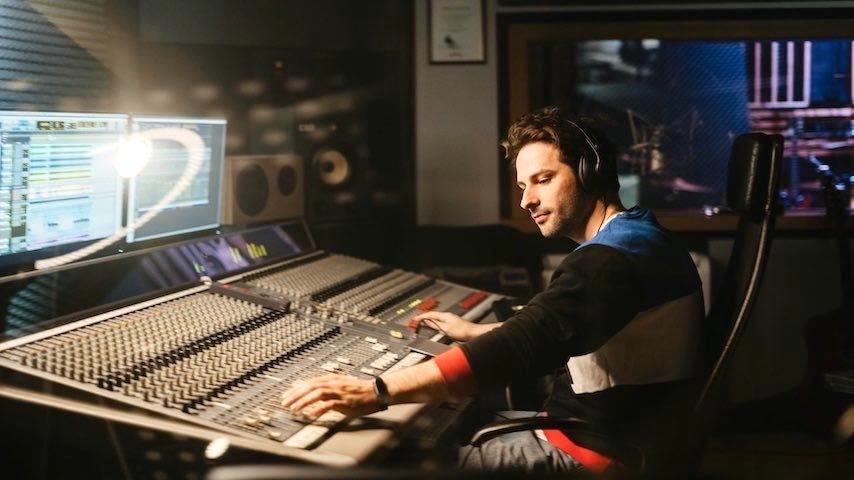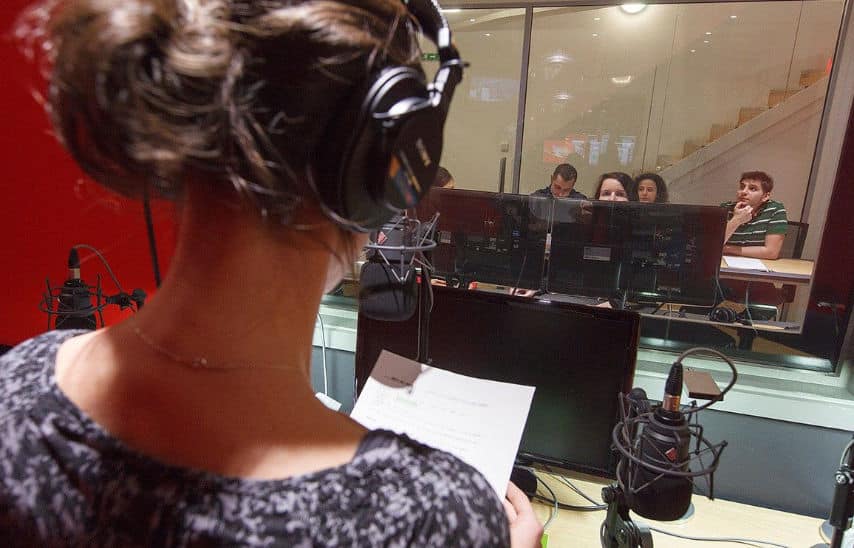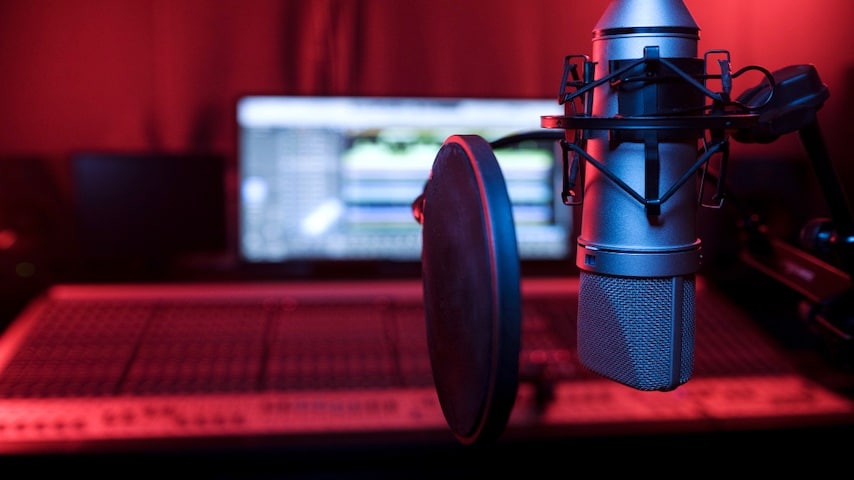Automated Dialogue Replacement (ADR) is a post-production process used in film and animation to re-record dialogue and match it with the on-screen visuals. ADR is an important part of the filmmaking process and can greatly enhance the final product. In this article, we will cover the basics of ADR in voice-over, including its definition and meaning, its importance in film and animation, and a brief overview of the article’s contents. By the end of this article, you will have a better understanding of what ADR is and how it is used in the filmmaking industry.
Table of Contents
ToggleWhat is ADR?
Automated Dialogue Replacement (ADR) is a post-production process used to replace or add dialogue in film and animation. ADR is also sometimes referred to as Additional Dialogue Recording or Looping. This process involves recording dialogue in a studio setting and syncing it to the visuals on screen. ADR can be used to fix technical issues, re-record dialogue that was poorly recorded on set, or add new dialogue that was not recorded during filming.
The practice of re-recording dialogue dates back to the early days of cinema. In the early 1930s, the introduction of sound in film created many challenges, including poor sound quality and inconsistent volume levels. As technology improved, so did the process of ADR. Today, ADR is a widely used and essential tool in the filmmaking industry.
To perform ADR, certain equipment and tools are necessary. These include a microphone, headphones, a digital audio workstation (DAW), and ADR software. The DAW is used to record and edit the dialogue, while the ADR software helps synchronize the new dialogue with the on-screen visuals. A soundproof recording studio is also required to ensure the highest possible sound quality.
The ADR Process
The ADR process involves several steps to ensure that the recorded dialogue matches the visuals and enhances the overall quality of the film or animation. Here is a step-by-step guide to the ADR process:
- Pre-production Planning: The ADR process begins during pre-production, where the script is analyzed to determine which lines will require ADR. A plan is then created to schedule the ADR sessions, hire the appropriate voice actors, and secure the necessary equipment.
- On-Set Considerations: During production, the sound team will record the production audio, which will serve as a guide for the ADR sessions. They will also take note of any dialogue that may require ADR due to technical issues or performance reasons.
- ADR Session: The ADR session is where the voice actor records the dialogue in a controlled studio environment. The actor watches the scene and re-records their lines while matching their performance to the visuals on the screen.
- Post-Production Considerations: The recorded ADR dialogue is then edited and integrated into the final mix of the film or animation.
It is important to consider several factors during the ADR process, such as lip-sync accuracy, consistency in performance, and background noise reduction. By following the ADR process, filmmakers and animators can ensure that the final product is of the highest quality.
In addition to the ADR process, it is also important to consider pre-production planning and on-set considerations when planning for ADR. By taking these factors into account, the ADR process can be seamlessly integrated into the overall production workflow.
ADR vs. Voice-Over
While ADR and voice-over may seem similar, they serve different purposes in film and animation. ADR is used to replace or add dialogue that was poorly recorded or not recorded during filming, while voice-over is used to provide additional information or narration that is not part of the original dialogue.
Differences:
- ADR is used to replace or add dialogue, while voice-over is used to provide additional information or narration.
- ADR is recorded in a studio setting to match the on-screen visuals, while voice-over is recorded separately and added to the film or animation later.
- ADR requires synchronization with the on-screen visuals, while voice-over does not.
Similarities:
- Both ADR and voice-over are recorded in a studio setting.
- Both require a high-quality recording setup to ensure the best sound quality.
- Both are used in post-production to enhance the final product.
When to use ADR vs. Voice-Over in a project:
- ADR is used when the original dialogue is unusable or missing from the production, or when dialogue needs to be changed or added for creative reasons.
- Voice-over is used when additional information or narration is needed, or when the original dialogue needs to be supplemented with translations or interpretations.
Understanding the differences and similarities between ADR and voice-over is essential for determining which technique is appropriate for a particular project.
ADR vs. Dubbing
ADR and dubbing are two separate processes that are often confused with each other. Both are used to replace or add dialogue in film and animation, but they differ in how they are used and when they are appropriate.
Differences:
- ADR is used to replace or add dialogue in a studio setting, while dubbing is used to replace dialogue in a foreign language with a translation in a different language.
- ADR involves recording new dialogue that matches the on-screen visuals, while dubbing involves recording new dialogue that matches the lip movements of the actors on screen.
- ADR is used to fix technical issues or creative changes, while dubbing is used to provide a translation for an audience that speaks a different language.
Similarities:
- Both ADR and dubbing involve recording new dialogue that is synced with the visuals on screen.
- Both require a high-quality recording setup to ensure the best sound quality.
- Both are used in post-production to enhance the final product.
When to use ADR vs. Dubbing in a project:
- ADR is used when the original dialogue is unusable or missing from the production, or when dialogue needs to be changed or added for creative reasons.
- Dubbing is used when a film or animation is being translated into a different language for a foreign audience.
Understanding the differences and similarities between ADR and dubbing is essential for determining which technique is appropriate for a particular project.
Why Use ADR in Film and Animation?
ADR is an essential technique in post-production for film and animation. There are several benefits to using ADR, including:
- Sound Quality: ADR allows for the recording of high-quality dialogue in a controlled studio environment, free from background noise or other distractions that may occur during production.
- Flexibility: ADR allows for flexibility in the recording of dialogue, as actors can re-record their lines to match any changes made to the visuals or to improve their performance.
- Consistency: ADR allows for consistency in the dialogue, as actors can record their lines multiple times to ensure they match the lip movements and visual cues on screen.
Examples of ADR in movies and animation:
- The Godfather (1972) – ADR was used to replace Marlon Brando’s dialogue due to his difficulty speaking in the original recording.
- The Lion King (1994) – ADR was used extensively to match the dialogue with the lip movements of the animated characters.
- The Avengers (2012) – ADR was used to replace some of the on-set dialogue due to technical issues and to improve the performances of the actors.
By using ADR, filmmakers and animators can improve the sound quality, flexibility, and consistency of their projects, resulting in a more polished and professional final product.
Actors and ADR
Actors play a crucial role in the ADR process, as they are responsible for recording the replacement dialogue. Here are some common questions regarding actors and ADR:
Do actors get paid for ADR work?
Yes, actors typically get paid for ADR work, just like any other type of acting work. The specific payment will depend on factors such as the actor’s contract, the length of the ADR session, and the budget of the production.
How do actors record ADR lines?
Actors record ADR lines in a controlled studio environment, where they watch the scene and re-record their lines while matching their performance to the visuals on the screen. They may use a microphone or a headset and will work with a sound engineer who will adjust the levels and provide direction.
Tips for actors recording ADR
Here are some tips for actors recording ADR:
- Familiarize yourself with the scene and the character’s emotional state.
- Match the lip-sync as closely as possible to the original performance.
- Focus on creating a consistent performance across multiple takes.
- Work closely with the sound engineer to ensure that the recording quality is high.
By following these tips, actors can help ensure that their ADR performance is of the highest quality and seamlessly integrates with the rest of the production.
Conclusion
In conclusion, ADR is an essential tool in the post-production process for film and animation. By replacing or enhancing dialogue, ADR can help improve the overall quality and coherence of a production. Here are some key takeaways from this article:
- ADR stands for Automated Dialogue Replacement and refers to the process of re-recording dialogue in a controlled studio environment.
- ADR is different from both voice-over and dubbing, and the choice of which technique to use depends on the specific needs of the project.
- ADR has numerous benefits, including improving audio quality, enabling script changes, and enhancing performances.
- The ADR process involves careful planning, on-set considerations, and post-production editing to ensure a seamless integration with the rest of the production.
- Actors play a crucial role in the ADR process, and they are typically compensated for their work.
Overall, ADR is a powerful tool that can help elevate the quality of film and animation productions. With careful planning and execution, ADR can help create a more immersive and engaging experience for viewers.






















